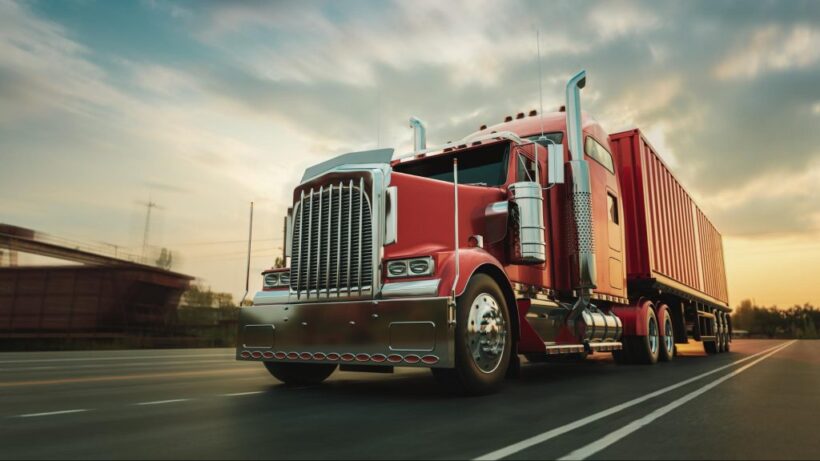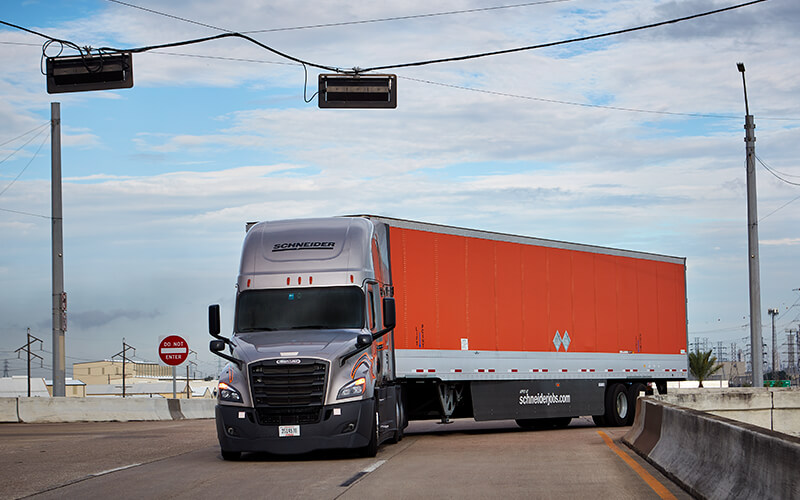Trucks play a significant role in our economy, transporting goods from one place to the other. However, sharing the road with a large commercial vehicle can be intimidating and even dangerous for smaller vehicles. Being involved in a truck accident can be catastrophic, causing severe injuries and even fatalities. It’s crucial to take extra precautions while driving near a commercial vehicle. This blog gives you essential tips to help you avoid truck accidents and stay safe on the road.
Report Unsafe Driving

If you see a truck driver acting unsafely, such as being angry or intoxicated while driving, take the necessary action by reporting it to the proper authorities. Take down the truck’s description, location, and license plate number if you can. The safety of everyone on the road is increased, and accidents may be avoided if hazardous driving is reported. Unsafe driving may include speeding or the truck veering off the road. However, if you find yourself in an accident with the truck, a truck accident lawyer from injuryally.com is your best option for representation.
Keep Your Safe Following Distance
It’s critical to keep your distance from the truck in front of you. Trucks need extra time and space to stop entirely because of their greater size and weight. When driving a large vehicle, you can’t see as far ahead to avoid obstacles like halted or slow-moving traffic, road work, or other hazards. You’ll have more time to respond if you need to make a rapid stop or swerve if you give yourself plenty of room between your car and the truck in front of you.
By maintaining a suitable space, you can give yourself a safety zone and reduce the chance of rear-end incidents. Maintaining a following distance of at least four to six seconds behind a truck is generally recommended.
Be Mindful of Blind Spots

Trucks have wider blind spots than smaller cars. There are blind spots, commonly referred to as “no-zones,” on all sides of the truck and directly in front of and behind it. These blind zones must be recognized, and prolonged stays there must be avoided. You won’t be able to see the truck driver if you can’t see them in the side mirrors. When driving close to trucks, be visible and avoid unexpected movements.
Signal Appropriately
Safety on the road, especially when sharing the road with trucks, depends on clear communication. Always utilize your indicators well in advance of lane changes and turns. Truck drivers have plenty of time to respond and modify their driving style. Keep your lane changes smooth; sudden lane changes might scare truck drivers and perhaps cause accidents. To maintain a safe driving environment, smooth and predictable movements are essential.
Pass Carefully and Swiftly
It’s critical to pass trailers carefully and quickly. Ensure you have a clear view of the road ahead before starting the maneuver and that there is adequate room for you to pass without getting in the way of the truck. Give the vehicle a clear indication that you intend to pass, then swiftly accelerate and get past it. Try to avoid staying in the truck’s blind spot while passing. When passing, go at a constant speed and give the truck adequate space to return to your lane safely.
Turn Cautiously

To make a turn, a truck needs more space than a car. The driver’s field of view is also restricted. It is better to overestimate the space a vehicle will require to clear an intersection or a curve than to underestimate it. Please consider that the vehicle is going quicker than you think and will need the entire intersection to complete its turn.
Trucks have a larger turning radius than smaller vehicles. Exercise caution and provide turning trucks with enough room on the road so they may finish their maneuvers. Never try to squeeze in between a turning truck and the curb; doing so can result in catastrophic accidents. A truck turning may also need to swing wide to make the turn safely, so avoid attempting to pass one. When making turns near trucks, patience and alertness are essential.
Drive Carefully in Bad Weather
When driving near trucks, you should take extra care in bad weather, like rain, snow, or ice. Due to their weight and size, trucks take longer to stop on wet or icy roadways. When driving behind a truck in bad weather, widen your following distance to give yourself more time to respond. Avoid unexpected moves that can result in loss of control, and adjust your speed appropriately. Due to decreased visibility, vehicles may make more comprehensive maneuvers in these circumstances.
Hydroplaning is more likely, and flooding is a risk when it rains heavily. In extreme cases, dense fog can reduce visibility to less than five feet. Due to the size of their trailers, trucks pose a unique risk when driving in high-velocity winds. Strong gusts can shake, tip, and shove trailer compartments so the truck can jackknife or roll over if the driver doesn’t take corrective action.
Although snow and ice are not typical driving hazards they can create hazardous conditions if the temperature lowers and snow begins to fall. Trucks have a significantly longer stopping distance than conventional vehicles, so if the driver isn’t paying attention to the road conditions, even a slight slide could lead him to lose control.
Observe Work Zones

Sharing the road with trucks when in a work zone or during construction presents unique obstacles. In work zones, slow down and obey traffic signs. Lanes might be getting smaller, and employees or construction machinery might be around. Trucks may make frequent stops or lane changes in work zones. Maintain a safe distance, stay attentive, and be ready for any abrupt changes in traffic patterns.
Maintain Concentration and Avoid Distractions

Distractions while driving significantly increase the risk to your safety and the safety of other road users, especially while sharing the road with trucks. Avoid anything that could distract your focus from driving, such as using mobile devices, eating, grooming, or other activities. Keep your eyes on the road ahead and constantly on your surroundings. Awareness and attention let you respond quickly to potential dangers and avert hazardous circumstances.
Endnote
Avoiding truck accidents depends on using defensive driving techniques, being aware of your surroundings, and following safety regulations. You can significantly lower the likelihood of accidents involving trucks by keeping a safe following distance, being aware of your blind spots, signaling your intentions, passing safely, giving trucks enough room to turn, adjusting to lousy weather, paying attention to work zones, avoiding distractions, and reporting dangerous driving. To make driving safer and more pleasant, remember to put both your and others’ safety first.

